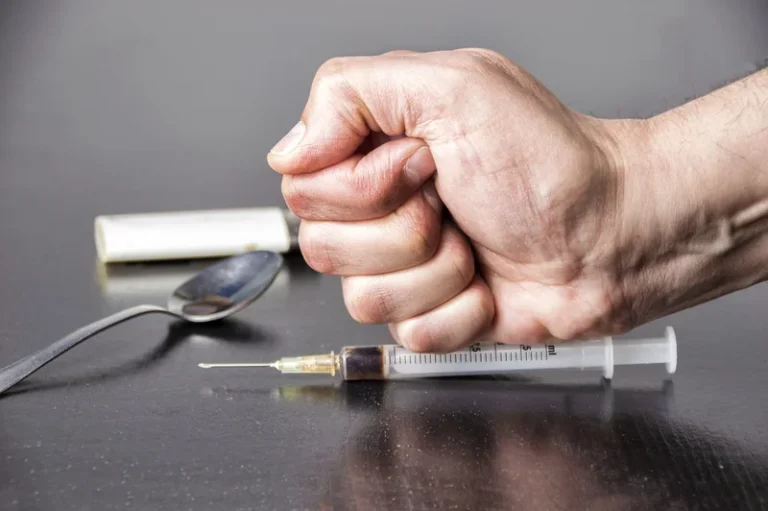
Dopamine levels plummet as alcohol’s effects wear off, frequently falling below normal levels. In contrast to the exhilaration we felt while drinking, this abrupt dopamine dip might leave us feeling gloomy, nervous, or depressed. The sharp rise does alcohol release dopamine and fall in dopamine levels might make recovering from drinking extremely difficult and reinforce a cycle of drinking in pursuit of that elusive dopamine high.
Cognition relies on appropriate stimulation of DA receptors in PFC
- We used a double-blinded, within-subjects, counter-balanced design consisting of two laboratory visits of ~8 h each; visits were separated by ≥72 h.
- Therefore, strategies that promote healthy dopamine function, such as engaging in rewarding activities, maintaining a balanced diet, and getting regular exercise, can contribute to overall brain health and potentially reduce the risk of substance use disorders.
- One factor contributing to the development of AUD may be the change in synaptic signaling in the caudate and putamen that could contribute to a bias toward sensory-motor circuit control of behavior and inflexible alcohol consumption 33, 34.
- The study also suggests that mindfulness meditation can remodel brain networks that can lead to recurrence.
- Individuals with low dopamine levels may experience a loss of motor control, such as that seen in patients with Parkinson’s disease.
Individual differences, such as baseline dopamine levels, sex, state factors, and genetic factors may play a role in the depletion effects as seen in previous studies 29, 117. Our conclusions would have been strengthened by including plasma measurements of amino acids to confirm the effectiveness of the P/T depletion procedure. In addition, this study only included males due to sex differences in the dopamine system 118, 119. Finally, preclinical studies demonstrate phasic dopamine release in response to conditioned reinforcers 23, 36, and P/T depletion suppresses spontaneous dopamine transients in the NAc of rats at rest 57. However, in this study, the behavioral tasks were performed after the resting-state scan; future work pairing event-related fMRI AB tasks with the P/T depletion procedure may provide additional insight into the dopamine response to alcohol or non-drug reward cues.
Acute ethanol enhances dopamine release
Some addictive substances affect Substance abuse dopamine directly, whereas alcohol and other drugs have an indirect effect. Alcohol is a small molecule, so it interacts with many neurotransmitters in the brain. Large molecules, like opiates or amphetamines, only stimulate a specific neurotransmitter. For those concerned about their alcohol use or its effects on brain health, numerous resources are available. These include healthcare providers, addiction specialists, support groups like Alcoholics Anonymous, and online resources provided by organizations such as the National Institute on Alcohol Abuse and Alcoholism (NIAAA). Brodie and his colleagues will continue to investigate the role of KCNK13 and examine how selective manipulation of the channel in other brain areas and cell types might alter alcohol-related behaviors.

Regional websites

Yim H and Gonzales R. Ethanol-induced increases in dopamine extracellular concentration in rat nucleus accumbens are accounted for by increased release and not uptake inhibition. Wernicke’s encephalopathy is an acute, yet potentially reversible, neuropsychiatric disorder caused by a deficiency (or depletion) in thiamine (thiamine pyrophosphate) caused by chronic alcohol use. Other causes include gastric bypass surgery, gastric and colon cancer, hyperemesis gravidarum, long-term parenteral feeding, and poor nutrition. Alcohol dependence is characterised by deficits in the physiological dysregulation of motivation and reward systems, such as those in the limbic system, hippocampus, amygdala, caudate nucleus, frontal lobe and nucleus accumbens. Different alleles of the genes in the various pathways are being studied in different population groups across the world.

The positive reinforcing action of alcohol comes from the activation of the dopaminergic reward pathway in the limbic system. Dopamine is a neuromodulating compound that is released in the ventral tegmental area (VTA) and projects to the nucleus accumbens (NA) where it is acutely involved in motivation and reinforcement behaviours. Similar observations have been made in rodent models of alcohol dependence where confounds such as genetic predisposition and environmental influences can be controlled (Trantham-Davidson et al., 2014). A detailed understanding of the cellular effects of alcohol that contribute to cognitive dysfunction is important for the development of novel therapeutic strategies aimed at the mesocortical dopamine system to improve cognitive function and treat AUDs. The brain’s depleted state of dopamine means that an ex-drinker may continue to experience obsessive thoughts about alcohol for years after their last drink.
- This same pathway has been linked to some of the brain reinforcement mechanisms that keep those with alcohol use disorder coming back for more – which means it might be possible to develop treatments that break these damaging loops in behavior.
- He thus starts consuming more and more alcohol until a point comes when normal brain chemistry simply cannot function without alcohol.
- A detailed understanding of the cellular effects of alcohol that contribute to cognitive dysfunction is important for the development of novel therapeutic strategies aimed at the mesocortical dopamine system to improve cognitive function and treat AUDs.
- The decreased baseline dopamine function can lead to anhedonia (the inability to feel pleasure from normally pleasurable activities) when not drinking, further driving the compulsion to consume alcohol.
- The detailed necropsy procedures used to harvest tissues 28 and obtain ex vivo slices 8 have been previously described.
- It starts to produce less of the chemical, reduce the number of dopamine receptors in the body and increase dopamine transporters, which ferry away the excess dopamine in the spaces between brain cells.
- CFEs were calibrated post hoc against a solution of 1 µM dopamine dissolved in voltammetry ACSF.
- In the United States of America, alcohol use disorder (AUD) accounts for annual economic losses of ~$250 billion 2 and ~88,000 deaths 3.
- Therefore, attenuated D2 receptor stimulation of FSINs would negatively affect prefrontal function and could contribute to cognitive deficits observed in abstinent alcoholics that appear to play a role in relapse.
- Dopamine alters the sensitivity of its target neurons to other neurotransmitters, particularly glutamate.
Therefore, in the current study, we used fast-scan cyclic voltammetry (FSCV) to study dopamine release dynamics in striatal slices from long-term alcohol drinking and control rhesus macaques. This method allows for examination of dopamine release and its regulation on a subsecond time scale that has seldom been used in NHPs 18,19,20,21,22,23,24. Furthermore, FSCV allows for the study of dopamine uptake using Michaelis–Menten based kinetic modeling of uptake parameters, allowing researchers to assess dopamine transporter function.

Researchers uncover new target of alcohol in the brain
Additionally, our staff provides family counseling, relapse prevention, life skills, and grief and trauma counseling. We are grateful to the Cuzon Carlson and Grant laboratories for their technical assistance and for hosting us while completing these studies. We are also thankful to the members of the Sara Jones laboratory at Wake Forest University and the Laboratory for Integrative Neuroscience at NIAAA for their support and helpful discussions. I am a PhD-trained biochemist and neuroscientist with over 9 years of research experience in the field of neurodegenerative diseases. As an academic I have published several scientific papers; as a medical writer I have written many articles in print and online, covering topics on ageing, brain health, anatomy, psychiatry, and nutrition. Genetic susceptibility linked to thiamine transporter genes may be involved in the development of WKS in vulnerable patients.
Does Alcohol Increase Dopamine
Remember that you don’t need alcohol to enjoy the ‘sparks’ of life; all you need is a healthy brain. Researchers discovered that after a year of recovery, the number of dopamine proteins in the brain increases. Several potential ways that the brain has adjusted back to a “baseline” level during and after addiction treatment have been investigated by researchers. It is vital to our health, so consider that before you take another shot of your favorite alcoholic drink.

